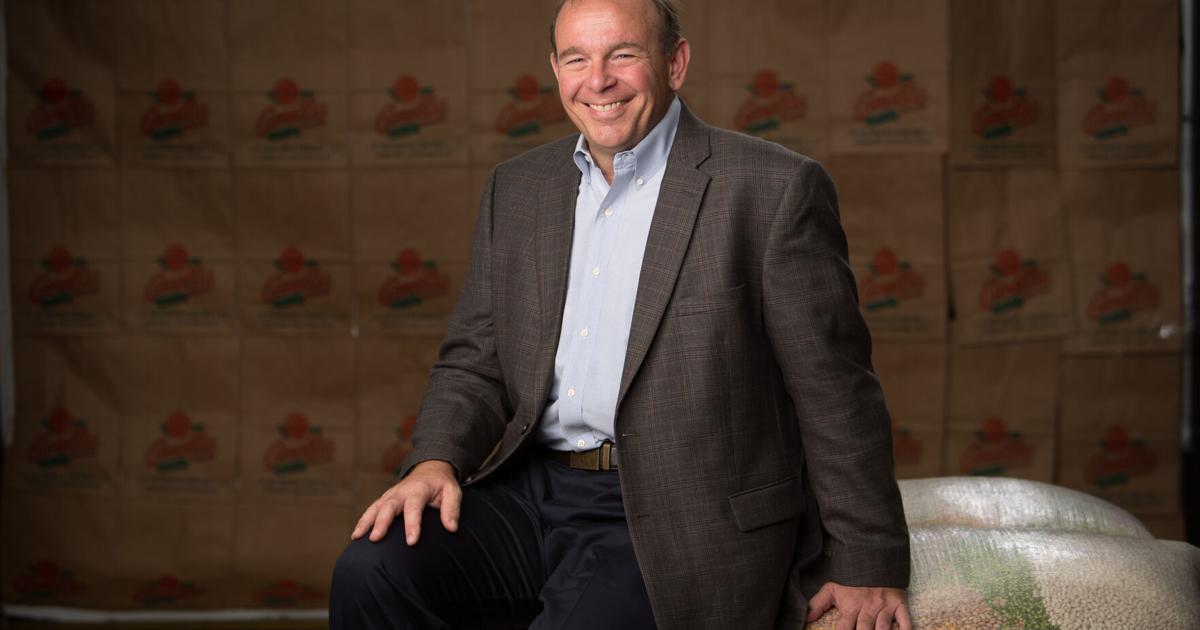[ad_1]
From an unassuming, 40,000-square-foot warehouse facility in Harahan, Camellia Brands cleans, sorts, processes and packages about one million pounds of dried beans, peas and lentils a week. That includes its flagship red kidneys, which are a staple ingredient in New Orleans’ iconic dish, red beans and rice.
Vince Hayward is the fourth generation to run the family-owned business started by his great grandfather in 1923. Today, the company, has 70 employees, processes 19 different varieties of beans and generates annual revenues of $30 million to $40 million.
In this week’s Talking Business, Hayward discusses the challenges of keeping a legacy business relevant and how he’s trying to reach an increasingly segmented market of customers who buy groceries online and want quick, easy-to-prepare meals.
This interview has been edited for length and clarity.
Tell me about the bean business and what goes on here at Camellia.
A: We’re not farmers. We don’t grow the beans. But we work with small family farms around the U.S. and source the different varieties from whatever region they grow best in. There are no large, corporate farms like ADM (Archer Daniels Midland) in the world of beans. All our growers are small growers and we have been working with them for generations, which is one of the secrets to our success. They know what we need. We know what they produce, and we speak the same language.
But wait, red beans don’t come from Louisiana?
A: Red kidney beans are grown mostly in the central U.S. all the way up to Michigan and Minnesota. They can grow in Louisiana but they don’t grow as well here as in drier climates.
With the pressures on smaller farmers today, how do you ensure they’ll be around? Does your business keep some of them afloat?
A: The life of a farmer has always been tenuous. Our farmers cycle between beans, corns, wheat and soybeans. Growing beans provides an opportunity for a farmer to replenish the soil because none of the plant is actually harvested. After the beans are harvested, the rest of the plant is tilled back into the soil. So, we are a crop that needs to be rotated back into the cycles.
What is going on in the market for dried peas, beans and lentils? Is it better, worse than a few years or decades ago?
A: Trends are in our direction and in our favor. Anyone who eats a plant-based diet knows that beans are a good part of that. We’re high in flavor, low in fat, good for gut health. The drawback is that they take a long time to cook. Consumer habits and preferences skew towards quicker cooking. Some of that has been mitigated by the Insta-pot and the resurgence in home cooking that happened with COVID. So that is where a lot of our marketing and advertising are centered — how easy it is to cook beans and have a healthy meal that is delicious.
Is there a lot of competition in your market?
A: Most of the competition comes from the private grocery store labels. Stores really want customers to buy their brands, especially now with concerns about the economy and people are in the habit of looking for lower-cost alternatives. So, we compete pretty intensely.
How do you make the case that your dried beans are better? Can you, really?
A: Yes, It’s about consistency. We’re extremely selective about the beans. We’re also really focused on things like cook time, color, appearance, cleanliness, things that generic branded items can’t focus on like we do.
Where are the pressure points in your industry right now?
A: Labor. It’s a struggle in a couple of ways. For one, inflation has hit our workforce really hard, with energy costs, food costs and even interest rates so we’re raising salaries and wages. At the same time, we’re competing for a diminished pool of qualified labor so we’re battling that on two fronts, as is everybody. It’s not a unique position to be in. But as costs are rising significantly, we work very hard not to pass those on. The other thing is figuring out how to communicate with our customers. The world of media and advertising has changed significantly over the last 10 years and especially over the past three years. Also, the way consumers are purchasing groceries is changing significantly. Many people use an app, which means they’re not walking down the aisle anymore to see our products or display ads.
So what do you do?
A: We have to stay relevant in those methodologies. We work with all the app makers to make sure we have good placement. We use data to see how they are interacting with their consumers and how we can participate to make sure we stay top of mind.
What does that look like, as a practical matter?
A: If you’re on the app, you might see a pop-up ad for us. Or, if you’re searching for any number of items, like beans or rice, you would see a picture of our brand. Another way you might see us is if you bought our brand before on the app, we want to make sure when you open the app again it’s on the list of suggested items. One of the things these apps do is show what your order was the last time you used it. We want to make sure we stay on that list.
How is it working out for you?
A: All these efforts are very scattered right now. We are in the infancy of a lot of them. We have to pick and choose who we work with. On top of that, there is Amazon and a lot of folks buy things they need through Amazon and we have to participate there. So things are changing and evolving very rapidly and if you’re not keeping up with it, you’re not going to survive. The days of shopping in a grocery store are time limited. How long? We don’t know exactly but we can see an end so we have to make sure we don’t put ourselves on a path that has a dead end.
Where are y’all headed?
A: The reality is, as consumer preferences change we have to stay relevant, There is a resurgence in home cooking but also an expectation that it be fairly painless and easy. The days of following a recipe in a book is not as popular as it once was. So we know we have to produce products that are already measured and include step-by-step instructions. So, that is where we’re headed. We’re beginning to produce seasoning blends, kits, that making cooking our beans easy. We’ve just rolled out some of the products and we’re going to continue to focus on that in the new year.
[ad_2]
Source link



